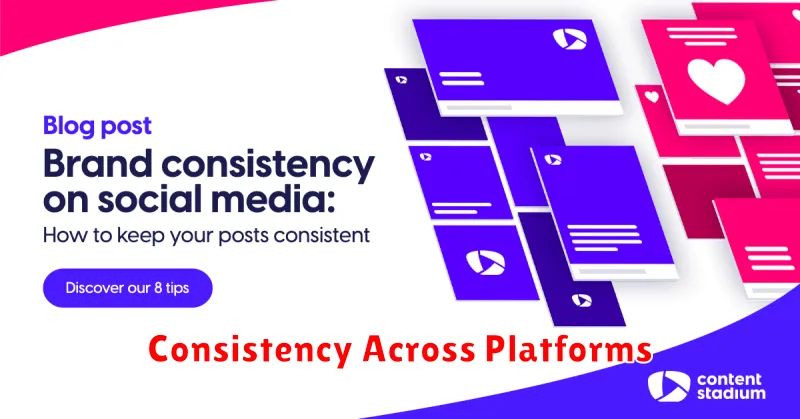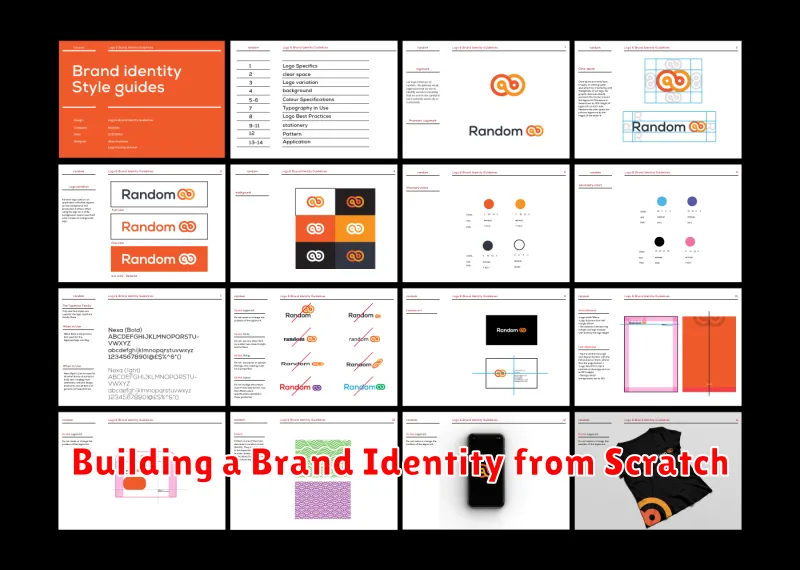Building a brand identity is a crucial undertaking for any business, whether a startup or an established enterprise seeking a refresh. A well-defined brand identity serves as the foundation for all marketing efforts, ensuring brand consistency and fostering brand recognition. This comprehensive guide will walk you through the process of building a brand identity from scratch, covering key aspects from defining your brand values and target audience to crafting a compelling brand message and visual identity. Understanding the significance of a strong brand identity is the first step towards establishing a powerful and enduring presence in the market. By investing time and effort in building a robust brand identity, businesses can cultivate brand loyalty and achieve long-term success.
This guide will equip you with the knowledge and practical steps necessary to craft a compelling brand identity that resonates with your target audience and sets you apart from the competition. We will explore the core components of a successful brand identity, including brand strategy, brand positioning, and brand personality. By following the steps outlined in this guide, you will be empowered to create a brand identity that not only captures the essence of your business but also drives meaningful connections with your customers, ultimately contributing to sustainable growth and brand equity.
Why Brand Identity Matters
A strong brand identity is the bedrock of a successful business. It’s much more than just a logo; it encompasses the entire perception of your company, influencing how customers think, feel, and interact with your brand. A well-crafted identity differentiates you from competitors in a crowded marketplace, making you instantly recognizable and memorable.
Brand identity fosters trust and loyalty. When customers consistently encounter a cohesive and authentic brand experience, they develop confidence in your offerings. This trust translates into repeat business and positive word-of-mouth referrals, driving sustainable growth.
Furthermore, a clearly defined brand identity provides internal direction. It acts as a guiding principle for all business decisions, from marketing campaigns to product development, ensuring consistency in messaging and experience. This alignment strengthens your brand’s overall impact and effectiveness.
Investing in building a strong brand identity is an investment in your future success. It lays the foundation for long-term growth and establishes a valuable asset that can significantly contribute to the overall value of your business.
Defining Your Brand Voice
A brand voice is the personality and emotion infused into all communications. It’s how you talk to your audience, and it should reflect your brand’s values and resonate with your target market. A clearly defined brand voice ensures consistency and builds recognition.
Consider the following aspects when defining your brand voice:
- Tone: Is your brand playful, serious, formal, or informal? This sets the overall mood of your communications.
- Language: What kind of vocabulary do you use? Simple and straightforward or technical and complex? Adapt to your target audience.
- Personality: Think of your brand as a person. Is it friendly, authoritative, innovative, or traditional? This adds a human touch.
Documenting your brand voice in a style guide ensures everyone involved in creating content understands how to communicate on behalf of the brand. This creates a unified experience for your audience, regardless of the platform or channel.
Creating a Visual Style Guide

A visual style guide acts as the blueprint for your brand’s visual elements. It ensures consistency and cohesion across all platforms, contributing to a recognizable and memorable brand experience. This guide outlines the specific rules for using your visual assets, ensuring your brand looks and feels the same everywhere it appears.
Key elements of a visual style guide include:
- Logo: Specify variations (e.g., primary, secondary, icon), usage guidelines, clear space requirements, and prohibited modifications.
- Color Palette: Define primary and secondary colors, providing hex codes or Pantone references for accurate reproduction. Include examples of color usage in different contexts.
- Typography: Specify font families for headings, body text, and other elements. Include details like font weights, sizes, and line heights. Demonstrate proper usage in various scenarios.
- Imagery: Define the overall style of photography and illustrations used in your branding. Provide examples of the desired aesthetic and guidelines for selecting and using visuals.
- Graphic Elements: Document any unique graphic elements, such as patterns, icons, or illustrations, that contribute to your brand’s identity. Include usage guidelines and specifications.
By meticulously documenting these visual elements, your visual style guide provides a valuable reference for designers, marketers, and anyone creating content for your brand. This ensures a unified brand presence and reinforces your brand identity across all touchpoints.
Consistency Across Platforms

Maintaining a consistent brand identity across all platforms is crucial for building recognition and trust. Whether it’s your website, social media profiles, email marketing, or physical materials, presenting a unified brand experience reinforces your message and values.
Inconsistency can confuse your audience and dilute your brand’s impact. Imagine encountering a company with a playful tone on Instagram but a formal, corporate voice on their website. This disconnect creates uncertainty and weakens the overall brand perception.
Key elements to maintain consistency across platforms include:
- Logo usage: Ensure consistent size, placement, and color variations of your logo.
- Color palettes: Stick to your defined brand colors across all visuals and design elements.
- Typography: Utilize the same fonts and font styles in all your communications.
- Imagery and graphics: Maintain a consistent visual style in the photos, illustrations, and other graphics you use.
- Messaging and tone of voice: Project the same brand personality and communicate with a consistent tone regardless of the platform.
By prioritizing consistency, you create a seamless and recognizable brand experience that resonates with your target audience and strengthens your brand’s overall presence.
Building Emotional Connection
A strong brand identity transcends mere aesthetics and functionality. It forges a genuine emotional connection with your audience, transforming casual consumers into loyal advocates. This connection is built upon shared values, resonant messaging, and consistent experiences that foster trust and affinity.
Understanding your target audience is crucial. What are their aspirations, values, and pain points? By aligning your brand with these emotional touchstones, you create a sense of belonging and shared understanding. This resonance fosters deeper engagement and brand loyalty.
Storytelling plays a vital role in emotional connection. Sharing authentic narratives about your brand’s origin, mission, and the people behind it humanizes your brand and makes it relatable. These stories can evoke emotions, inspire action, and create lasting impressions.
Authenticity is paramount. Consumers can quickly discern disingenuous attempts at emotional connection. Your brand messaging and interactions must be genuine and reflect the true values of your organization. Transparency and honesty build trust and strengthen the emotional bond with your audience.
Revisiting Your Brand Over Time
Even with the most meticulous planning, a brand identity isn’t static. Markets shift, customer preferences evolve, and your business itself will grow and change. Therefore, revisiting your brand identity periodically is crucial for maintaining relevance and effectiveness.
How often should you revisit your brand? There’s no hard and fast rule. Some brands may benefit from a refresh every few years, while others might go a decade or more without significant changes. Consider factors such as market disruption, significant company growth, or shifts in your target audience as triggers for a brand review.
Key areas to assess during a brand revisit include your mission and values, target audience, competitive landscape, and brand messaging. Ensure your visual identity still aligns with these core elements and resonates with your audience. This may involve subtle updates or a more comprehensive rebranding effort.
Don’t be afraid to evolve. A willingness to adapt and refine your brand identity over time is essential for long-term success.

